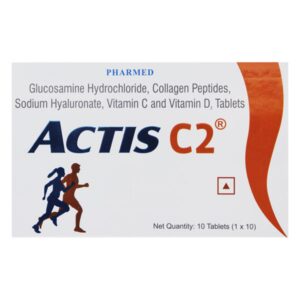AMOXYCILLIN + CLAVULANATE + AMBROXYL
Amoxycillin: Amoxicillin is a prescription antibiotic drug that belongs to the class of medications known as penicillins. It is commonly used to treat a variety of bacterial infections, including respiratory tract infections, ear infections, urinary tract infections, skin infections, and certain types of sexually transmitted diseases.
The mechanism of action of amoxicillin involves inhibiting the growth and multiplication of bacteria. It does this by interfering with the synthesis of the bacterial cell wall, which is necessary for the survival and integrity of the bacteria. By weakening the cell wall, amoxicillin allows the immune system to identify and eliminate the bacteria more effectively.
The recommended dose of amoxicillin varies depending on the type and severity of the infection being treated, as well as the patient’s age and weight. It is typically prescribed as tablets, capsules, or an oral suspension. It is important to take the medication exactly as prescribed by the healthcare provider, and to complete the full course of treatment, even if symptoms improve before the medication runs out. Skipping doses or stopping the medication prematurely can contribute to the development of antibiotic resistance.
Some common side effects of amoxicillin include diarrhea, nausea, vomiting, and stomach pain. These are generally mild and temporary. However, if these side effects persist or become severe, it is important to contact a healthcare provider. Allergic reactions to amoxicillin can occur, although they are relatively rare. Symptoms of an allergic reaction may include rash, itching, swelling, severe dizziness, or difficulty breathing. If any signs of an allergic reaction occur, seeking immediate medical attention is necessary. Additionally, amoxicillin can also cause other less common side effects, such as headache, dizziness, yeast infection, and changes in the blood cell counts. It is essential to consult a healthcare professional for any concerns or questions regarding the use of amoxicillin or its potential side effects.
Clavulanate: Clavulanate is a drug that belongs to the class of medications known as beta-lactamase inhibitors. It is primarily used in combination with certain antibiotics to enhance their effectiveness against bacterial infections.
The main purpose of clavulanate is to inhibit the activity of beta-lactamase enzymes produced by some bacteria. Beta-lactamases are enzymes that can break down and inactivate certain antibiotics, making them ineffective in treating bacterial infections. By inhibiting these enzymes, clavulanate allows antibiotics to remain active and exert their therapeutic effects.
Clavulanate is commonly used in combination with the antibiotic amoxicillin, resulting in a medication called amoxicillin/clavulanate or co-amoxiclav. This combination is often prescribed for the treatment of various bacterial infections, including respiratory tract infections, skin and soft tissue infections, urinary tract infections, and dental infections.
The dose of amoxicillin/clavulanate can vary depending on the specific infection being treated and the patient’s age and weight. It is important to follow the prescribed dosage and duration of treatment as directed by the healthcare provider. Typically, the drug is available in tablet or liquid form.
As with any medication, there can be side effects associated with the use of clavulanate. Some common side effects include diarrhea, nausea, vomiting, abdominal pain, and skin rash. These side effects are usually mild and transient. However, if they persist or become severe, it is important to seek medical attention.
In rare cases, clavulanate can cause more serious side effects, such as liver problems, allergic reactions (including anaphylaxis), and a type of diarrhea called Clostridium difficile-associated diarrhea. If any of these side effects occur, immediate medical attention should be sought.
Overall, clavulanate is an important and effective medication used in combination with antibiotics to combat bacterial infections. It works by inhibiting beta-lactamase enzymes, thus improving the overall effectiveness of the antibiotic. It is important to use clavulanate as prescribed and consult with a healthcare provider if any concerning side effects occur.
Ambroxyl: Ambroxyl is a medication primarily used as a mucolytic agent, which means it helps thin and loosen mucus in the respiratory tract. It is commonly prescribed for conditions such as chronic bronchitis, chronic obstructive pulmonary disease (COPD), and other respiratory infections.
The exact mechanism of action of Ambroxyl is not fully understood, but it is believed to increase the production of mucus-clearing enzymes, decrease the viscosity of mucus, and stimulate the ciliary activity in the respiratory tract. This helps in the expectoration of phlegm and provides relief from congestion and cough.
Ambroxyl is available in different formulations including tablets, capsules, and syrup. The recommended dose can vary depending on the age, severity of the condition, and the specific formulation. It is generally taken orally and can be taken with or without food.
Common side effects of Ambroxyl may include gastrointestinal symptoms such as nausea, vomiting, diarrhea, and abdominal pain. In some cases, it may cause a headache, dizziness, or allergic reactions like rash, itching, or swelling.
As with any medication, it is important to follow the prescribed dose and duration of Ambroxyl treatment as advised by a healthcare professional. If any side effects occur or if symptoms worsen or persist, it is important to seek medical advice promptly.


